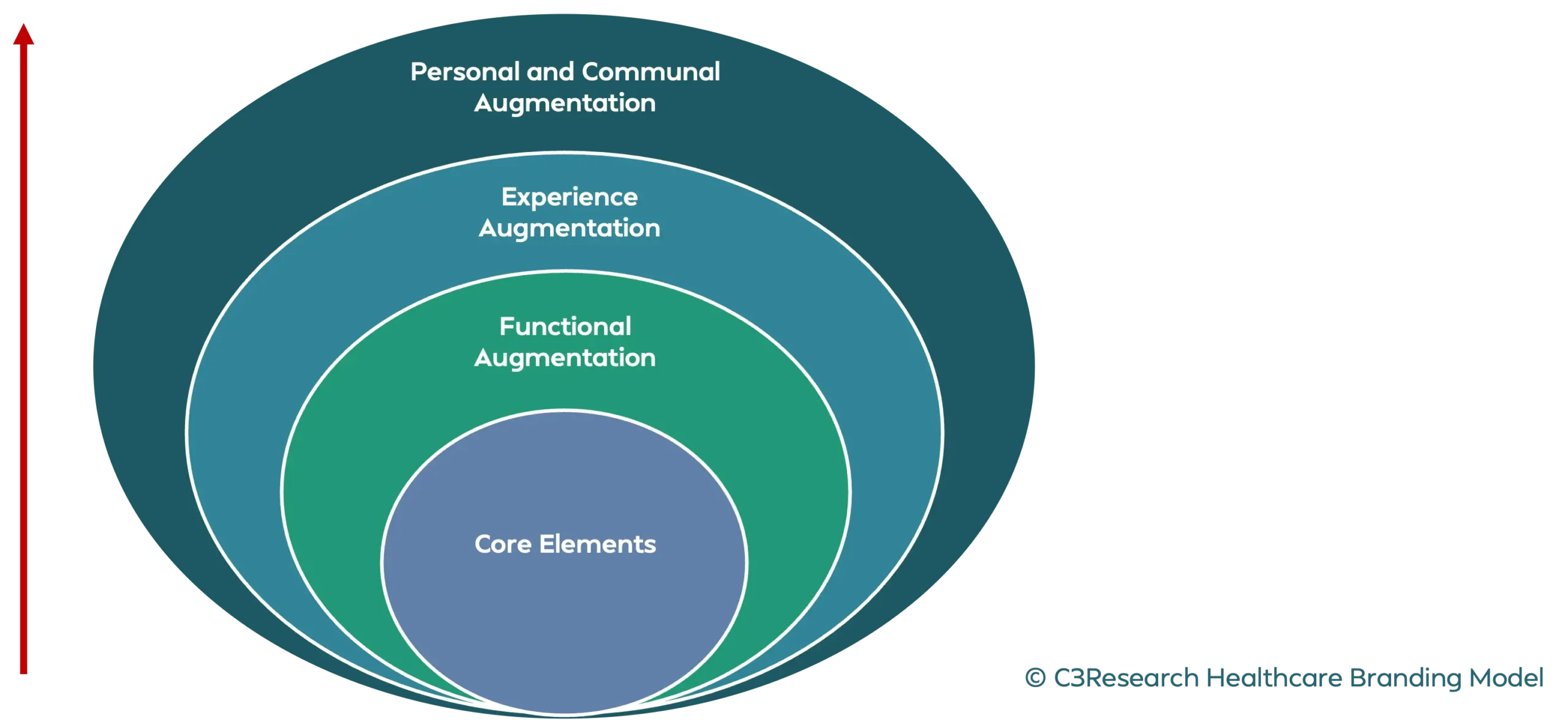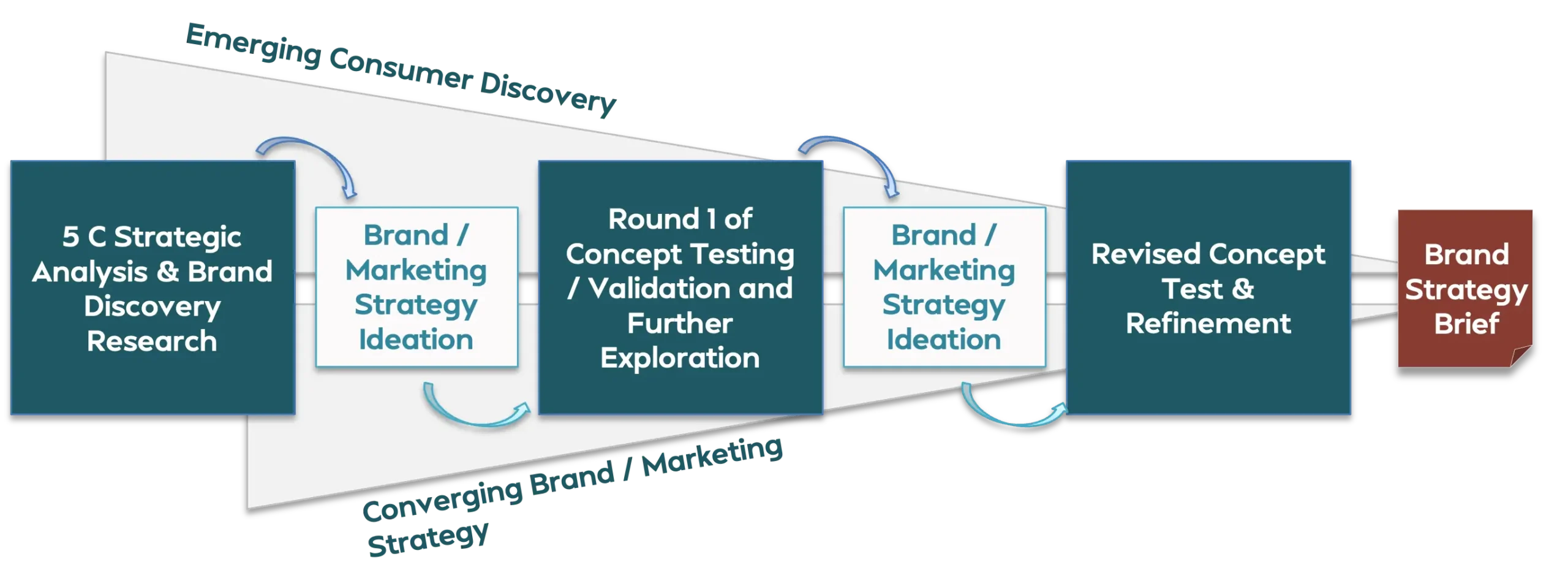From a marketing perspective, a term or phrase need not just have a literal meaning. Words evoke imageries, feelings, and thoughts.
Words or phrases do not always need to have a literal meaning. Abstract ideas are always difficult to express in literal terms and must rely on imageries and feelings to communicate. For example, it is challenging to define even a simple word like “love”. It is better understood as a feeling or through the images it evokes. The word “love” is also contextual and takes its meaning from the context in which it is used. To understand a brand name, therefore, we must understand the thoughts, images, and feelings it evokes in the context of the product category.
Marketers would rather start with an empty container and pour meaning into it.
An ambiguous word or phrase is sometimes highly desirable from a marketer’s perspective. It allows creating and defining the meaning, making it a proprietary asset. Marketers often infuse meaning into an ambiguous concept through advertising imagery, product design, and brand communication. It is not always desirable to be prescriptive in the task of meaning creation. A heavy-handed directive meaning, where the marketer wants to “spell it out,” can backfire and breed skepticism and disbelief. An ideal case would be where the consumer is invited to infer the meaning for herself within the guardrails of the marketer’s intent. Advertising and brand communications often frame the experience, leaving the consumer to interpret it in her own way.
However, abstract meaning must eventually meet hard reality. What does the brand name mean to a consumer in day-to-day consumption?
The reality of a product is often mundane and utilitarian. The tranquility and imagery of a brand name may not survive the everyday use of the product. For example, what does an upbeat name and logo for a health system mean to a patient? How is it communicated? Is it reassuring? Does it make a difference? The lived meaning of the health system’s brand name and logo may be even more significant in a hospital setting. The hospital environment, including the physical facility, compassion and caring, thoughtful touches, emotional support, and follow-up care, could all contribute to a “lived” experience of the brand.
Ultimately, the brand must have a shared meaning that is consensual among consumers.
In the final analysis, over time, the brand must mean something distinctive and useful to the consumers. If the phrase is ambiguous today, it should be transparent and meaningful tomorrow.
The brand communication and the lived experience will both play a role in generating this consensual meaning. The process of translating the shared meaning into a brand value should be reflected in a higher market share and increased brand loyalty. This can happen if the shared meaning is kept distinctive and unique to the brand, and it does not become a generic term.

Respondents are asked to collect 10-12 images that represent the brand concept as homework. When they come to the lab, each respondent presents their pictures to the triad group and explains their understanding of the brand concept.

The moderator guides the conversation to explore thoughts and feelings, focusing on the brand concept. The focus is on understanding all the facets of the brand concept – imageries, thoughts, and emotions in various contexts.

The focus then shifts to understanding the meaning in the context of actual use experience. What aspects of the brand’s use communicate the brand concept? How do we make it operational?
Respondents are asked to collect 10-12 images that represent the brand concept as homework. When they come to the lab, each respondent presents their pictures to the triad group and explains their understanding of the brand concept.
A Health System wanted to design a consumer app to help patients find physicians. The physician finder tool/app must offer four key benefits:

Core elements such as quality of care and range of services available provide limited scope for differentiation.
Better amenities, modern infrastructure, and shorter wait times provide the next level of differentiation.
Providing seamless and positive experience in navigating healthcare, building consumer relationships, shifting focus to managing health rather than treating sickness
Building deep ties with the local community. Nurturing personal experiences. Embedding the brand in the community as an Institution.
Brand strategy development is a systematic and disciplined creative research methodology that combines fact-finding research with creative ideation and strategy building in an iterative process.
The concept of emergent research design guides the process: as the research progresses, we revise and update our strategy ideas, as well as the research guide and techniques used in the next phase of research and ideation.
At the end of the process, the research findings should converge on clear directions for developing a Brand / Marketing Strategy brief.

Leading consumer-based brand equity models from academia and commercially available brand trackers:
Researchers like David Aaker, Kevin Keller, Don Lehman, Susan Fournier have focused on the following constructs:
There are several commercially available brand trackers that primarily focus on brand valuation based on critical brand and competitive metrics:

